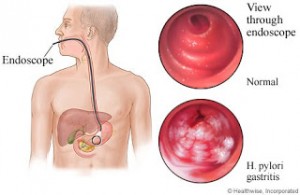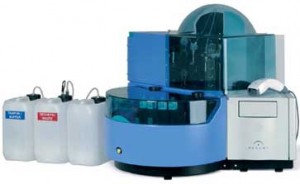At an anti-aging conference the topic of one of the talks was: treat the cause, not the disease. Traditionally, in Western medicine the doctor listens to the patient’s complaints, examines the patient, does some tests and then comes up with a diagnosis. Meanwhile a specific treatment regarding this diagnosis is then developed and a cure is expected. When there is no treatment success, it is disappointing or frustrating to both the patient and the physician. With anti-aging medicine a different approach is suggested with the principal “treat the cause, not the disease”. It is noteworthy that with this approach the doctor can incorporate all of the aspects that play a role with regard to the causes.
Dr. Magaziner: “Treat the cause, not the disease”
Dr. Allan Magaziner gave a lecture regarding this topic at the 20th Annual World Congress On Anti-Aging And Regenerative Medicine in Las Vegas (Dec. 12 to 15, 2012). His talk was entitled “Treat the Causes, Not the Disease…With a Patient-Centered, Integrative Approach”. He explained that there are 12 different categories that need to be taken into account when it comes to delineating causes of an illness in a patient, which he called the “diagnostic dozen”.
1. Is there oxidative stress?
2. Is there nutrient imbalance?
3. Is digestive absorption optimal?
4. Are there food intolerances?
5. Is there mitochondrial dysfunction?
6. Are the hormones and neurotransmitters functioning properly?
More points to consider
7. Is the patient under excessive stress?
8. Are there specific electromagnetic field disturbances in the body and would biofeedback be helpful?
9. Is the body’s toxic burden so high that it requires detoxification treatment?
10. Has there been environmental exposure to heavy metals?
11. Are genetic factors making the patient more vulnerable to disease?
12. Is the immune system weakened and are there signs of inflammation or chronic infection?
BPA from plastic bottles can cause cancer
A point often overlooked is that life in the 21st century has become more complex. That is to say, we are exposed to various degrees of pollution, such as lead and mercury, but also to BPA from plastic bottles. 93% of Americans, Dr. Magaziner said show measurable levels of BPA in urine. Surprisingly, research showed that many years of exposure to BPA causes breast cancer in women and prostate cancer in men!
Specifically, Dr. Magaziner gave an example of a 3-year-old boy with autism with a full discussion of all the diagnostic factors. Notably, conventional medicine treats autism by giving the children special educational programs and speech therapy on the one hand. On the other hand, the physician refers the patient to a physiotherapist to treat their gait problems. That is to say, typically an autistic child does not respond to this approach.
Autistic children often have heavy metal toxicity
In this case, when Dr. Magaziner saw this autistic child, he ordered blood tests that showed heavy metal toxicity. In particular, he ordered several chelation treatments to remove the heavy meals. The child had a leaky gut syndrome, had chronic yeast infection and a gut dysbiosis. It is important to realize that the doctor addressed all of these problems separately. Surprisingly, within a few weeks there was improvement of the child’s condition. First, his balance problems disappeared. Secondly, in addition, there was improvement of his attention span, concentration and memory. Thirdly, the child also started taking an interest in what was happening around him.
A girl with Crohn’s disease
Dr. Magaziner discussed another case, namely a 13-year-old girl that presented with Crohn’s disease. The girl had blood in her stools and had terrible bowel cramps. Conventional medicine including steroid therapy had failed to show improvements. Going through the diagnostic dozen revealed several important positive findings that were unknown before. As a result, attention to these factors led to a complete cure. Important findings in this girl were food sensitivities that could be pinpointed with a battery of blood tests involving IG-G, IG-A and IG-E antibodies to various food groups.
ONDAMED and Lyme disease
The physician used ONDAMED, an electro-diagnostic tool to normalize abnormal electromagnetic fields in the gastrointestinal region.
Perhaps the most impressive case was a patient with Lyme disease. Traditional medicine has very little to offer to such a patient and often the patient will go on to develop a fibromyalgia like arthritic condition leading to chronic disability. The patient responded to a combination treatment consisting of such various things as Curcumin, vitamin D3, cinnamon, CoQ10, D-Ribose, L-Carnitine, magnesium and zinc to help various enzymatic reactions regarding the anti-inflammatory effect. In addition, the patient received intravenous vitamin C to strengthen the Detox system. All of this helped to detoxify the patient and support the adrenal gland function.
Additional cases of Lyme disease
In addition, Dr. Magaziner gave 10 treatments of ONDAMED involving various frequency settings to assist the body in its recovery. The patient had a complete recovery from severe Lyme disease!
Dr. Magaziner was also one of the speakers in a company sponsored evening about the use of ONDAMED in the treatment of Lyme disease. He presented a total of 7 cases of Lyme disease where ONDAMED was successful in treating this difficult to cure condition! The common denominator in these cases was that various low-grade infections lingered on and other environmental factors weakened the immune system further. ONDAMED helped to strengthen the immune system together with detoxification treatments.
“Treat the cause, not the disease” is true even when multiple causes are present
There is nothing magic about the new approach of treating patients. Proactive medicine treats the cause of the patient’s illness while conventional medicine focuses on symptomatic treatment of a disease. Often there are several causes that can hide behind a diagnosis and exist parallel in a patient. With treatment of all these causes the patient recovers and regains full health.















